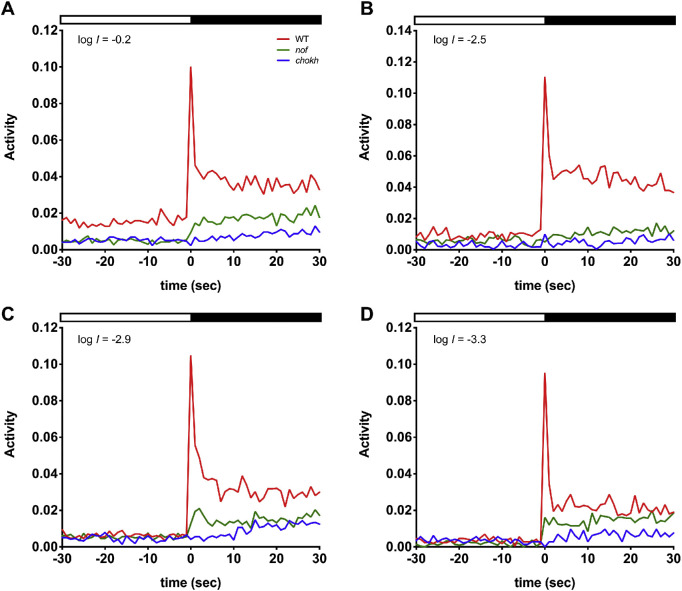Figure 5.
The nof mutants displayed a reduced light-Off VMR, which was still higher than that of the chokh/rx3 mutants at low-light intensities. The light-Off VMRs of WT larvae (red), nof (green), and chokh/rx3 mutants (blue) were measured at 6 dpf with the following light intensities: log I = −0.2 (A), −2.5 (B), −2.9 (C), and −3.3 (D). The experiments were conducted and resulting data plotted as described in Figure 3. The numbers of animals used are as follows: For (A, B), n = 72 for WT larvae and nof mutants, and n = 48 for chokh/rx3 mutants; for (C), n = 108 for WT larvae and nof mutants, and n = 72 for chokh/rx3 mutants; for (D), n = 36 for WT larvae and nof mutants, and n = 24 for chokh/rx3 mutants. Compared with WT larvae, the nof mutants always showed a reduction in amplitude of the fast response (<2 s after light offset). The sustained responses (>2 s after light offset) were also noticeably less. Nonetheless, the responses from the nof mutants were generally higher than the ones displayed by the chokh/rx3 mutants.

